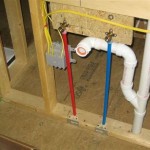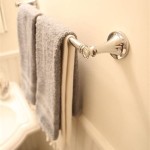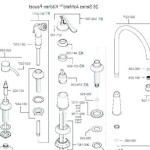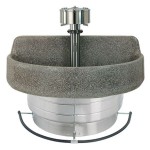What Are The Red Worms In My Bathroom Sink?
The discovery of red worms in a bathroom sink can be a disconcerting experience. These small, slender creatures often appear unexpectedly, raising concerns about hygiene, plumbing issues, and potential health risks. Identifying the worms accurately and understanding their origin is crucial for implementing effective solutions to eliminate them and prevent future infestations. Understanding the specific type of worm, their preferred habitat, and the conditions that attract them to bathroom sinks is the first step in resolving the problem.
The term "red worm" is often used generically to describe various reddish-colored worm-like organisms. It's important to distinguish between several possibilities, as their origins and required solutions may differ. Common culprits include drain worms (often midge fly larvae), bloodworms (another midge fly larvae), and even earthworms that have inadvertently entered the plumbing system. Each of these has unique characteristics and preferred habitats.
Accurate identification is paramount. Close examination of the worms' physical characteristics, size, and behavior can provide clues to their species. Observing their movement patterns, where they congregate, and the presence of any other signs of infestation can further aid in the identification process. Once the specific type of worm is identified, appropriate measures can be taken to address the problem effectively.
Identifying the Common Types of Red Worms Found in Bathroom Sinks
Several types of worm-like creatures are commonly mistaken for "red worms" in bathroom sinks. Distinguishing between them is vital for selecting the correct eradication strategy. The two most frequently encountered are drain worms (midge fly larvae) and bloodworms (also midge fly larvae). In rare cases, other types of worms, such as earthworms, may find their way into the plumbing system.
Drain Worms (Midge Fly Larvae): These are the most common culprits. Midge fly larvae, often called drain worms, are small, slender, and can range in color from pale pink to reddish. They are typically about ¼ to ½ inch long. These larvae thrive in the stagnant, nutrient-rich environment found in drains. They feed on organic matter that accumulates within the pipes, such as hair, soap scum, and food particles. The adult midge flies are small, non-biting insects that resemble mosquitoes. They are often seen near drains and damp areas. The presence of adult midge flies near the sink is a strong indicator that the red worms are, in fact, midge fly larvae.
Bloodworms (Also Midge Fly Larvae): Bloodworms are another type of midge fly larvae, but they are usually a more vibrant red color due to the presence of hemoglobin in their blood, which allows them to thrive in low-oxygen environments. They are often slightly larger than the typical drain worm. Like other midge fly larvae, they feed on decaying organic matter. Their presence in a sink may indicate a more significant buildup of organic material in the pipes or standing water in the drain trap. These larvae are often more tolerant of harsh conditions than the paler varieties.
Earthworms: While less common, earthworms can occasionally find their way into bathroom sinks. This typically happens due to heavy rains or flooding, which can saturate the soil and force earthworms to seek higher ground, sometimes entering through cracks in the foundation or through drain openings leading to the outside. Earthworms are typically much larger than midge fly larvae, often several inches long, and have a segmented body. Their presence is usually an isolated incident rather than an indication of a drain infestation.
Identifying the specific type of "red worm" observed is critical for choosing the most effective removal and prevention methods. If adult flies are present near the drain, it is highly likely that the worms are midge fly larvae. If the worms are significantly larger and segmented, they may be earthworms that have inadvertently entered the plumbing system.
Understanding the Causes and Attracting Factors
The presence of red worms, particularly midge fly larvae, in a bathroom sink is typically a result of an environment conducive to their survival and reproduction. Several factors contribute to the attraction and proliferation of these organisms in drainpipes.
Accumulation of Organic Matter: The primary reason for the presence of drain worms is the accumulation of organic matter within the drainpipes. This includes hair, soap scum, skin cells, toothpaste residue, and other debris that washes down the drain. These materials provide a rich food source for the larvae. Over time, this organic matter builds up, creating a stagnant, nutrient-rich environment that promotes the growth and development of midge fly larvae.
Standing Water: Standing water in the drain trap, also known as the P-trap, provides an ideal breeding ground for midge flies. The P-trap is designed to hold water, creating a barrier that prevents sewer gases from entering the bathroom. However, this water can also become a breeding ground for larvae if it is not regularly flushed out. The stagnant water provides a moist environment for the eggs to hatch and the larvae to thrive.
Poor Ventilation: Poor ventilation in the bathroom can exacerbate the problem. Excessive humidity and moisture create a favorable environment for midge flies to lay their eggs. Damp conditions encourage the growth of mold and mildew, which can also serve as a food source for the larvae. Proper ventilation helps to reduce humidity levels and discourage the proliferation of these pests.
Cracks and Openings in Drainpipes: Cracks or openings in drainpipes can provide access points for midge flies to enter and lay their eggs. These openings can also allow organic matter to accumulate more easily, creating a more hospitable environment for the larvae. Regular inspection of the drainpipes and sealing any cracks or openings can help to prevent infestations.
Infrequent Drain Cleaning: Infrequent cleaning of the drains allows organic matter to accumulate and creates a breeding ground for midge flies. Regular flushing and cleaning of the drains are essential for preventing the buildup of debris and keeping the pipes clear. Neglecting this maintenance can lead to a significant infestation of drain worms.
Understanding these contributing factors is crucial for implementing effective prevention strategies. Regular drain cleaning, proper ventilation, and addressing any plumbing issues can significantly reduce the likelihood of red worms appearing in the bathroom sink.
Eradication and Prevention Strategies
Once the presence of red worms in a bathroom sink has been confirmed, it is essential to implement effective eradication and prevention strategies. These strategies should focus on eliminating the existing larvae and preventing future infestations by addressing the underlying causes.
Boiling Water Treatment: One of the simplest and most effective methods for eliminating drain worms is to flush the drain with boiling water. The high temperature of the water will kill the larvae and dislodge any organic matter clinging to the sides of the pipes. This method should be repeated several times over a few days to ensure that all the larvae are eliminated. Caution should be exercised when using boiling water, especially with PVC pipes, as extreme temperatures can potentially damage them. However, slowly pouring a large kettle of boiling water down the drain is generally safe and effective.
Baking Soda and Vinegar Solution: A mixture of baking soda and vinegar can also be used to clean the drain and kill the larvae. Pour one cup of baking soda followed by one cup of vinegar down the drain. Allow the mixture to fizz and foam for about 30 minutes, then flush the drain with hot water. This solution helps to break down organic matter and eliminate the larvae. The chemical reaction between the baking soda and vinegar creates a natural cleaning agent that is effective and environmentally friendly. This method can be used regularly as part of a drain maintenance routine.
Commercial Drain Cleaners: Commercial drain cleaners can be effective for eliminating drain worms, but they should be used with caution. Many commercial drain cleaners contain harsh chemicals that can be harmful to the environment and potentially damage the pipes. It is important to choose a drain cleaner that is specifically designed for organic clogs and that is safe for the type of pipes in the plumbing system. Follow the instructions on the product label carefully and take necessary safety precautions, such as wearing gloves and eye protection. Consider enzymatic drain cleaners, which use enzymes to break down organic matter, as a safer and more environmentally friendly alternative to harsh chemical drain cleaners.
Drain Snakes and Brushes: Using a drain snake or brush can help to physically remove organic matter from the drainpipes. A drain snake is a flexible tool that can be inserted into the drain to dislodge and remove clogs. A drain brush can be used to scrub the inside of the pipes and remove any accumulated debris. These tools can be particularly effective for removing hair and other stubborn materials that contribute to the buildup of organic matter. Using a drain snake or brush regularly can help to keep the drains clear and prevent infestations.
Regular Drain Maintenance: Regular drain maintenance is essential for preventing future infestations of red worms. This includes flushing the drains with hot water regularly, using baking soda and vinegar solution periodically, and cleaning the drainpipes with a drain snake or brush. It is also important to avoid pouring grease, oil, and other materials down the drain that can contribute to the buildup of organic matter. Proper maintenance can significantly reduce the likelihood of red worms appearing in the bathroom sink.
Addressing Damaged Plumbing: If cracks or openings are present in the drainpipes, it is important to address these issues promptly. Sealing any cracks or openings can prevent midge flies from entering and laying their eggs. Damaged pipes should be repaired or replaced to prevent further infestations. Addressing plumbing issues can also help to improve drainage and reduce the likelihood of standing water in the drain trap.
Improving Ventilation: Improving ventilation in the bathroom can help to reduce humidity levels and discourage the proliferation of midge flies. Use an exhaust fan during and after showers to remove excess moisture from the air. Ensure that the bathroom is properly ventilated to prevent the growth of mold and mildew. Proper ventilation can create a less hospitable environment for midge flies and other pests.
Professional Plumbing Services: In cases of severe infestations or persistent problems, it may be necessary to consult with a professional plumber. A plumber can inspect the plumbing system, identify the source of the infestation, and recommend appropriate solutions. They can also perform more thorough cleaning and repairs to eliminate the problem and prevent future occurrences. A professional plumber has the expertise and equipment to address complex plumbing issues and ensure that the problem is resolved effectively.
By implementing these eradication and prevention strategies, it is possible to eliminate red worms from the bathroom sink and prevent future infestations. Regular maintenance, proper ventilation, and addressing any plumbing issues are key to keeping the drainpipes clean and free of pests.

What Are Bloodworms How Do I Get Rid Of Them

How To Get Rid Of Earthworms In The Bathroom ستورم Storm

How To Get Rid Of Earthworms In Bathroom Follow These Simple Steps

Eliminating Redworms And Midge Flies In Wastewater

Bright Red Worm In Washbasin Is A Blackworm All About Worms
.jpg?strip=all)
Things In Unusual Places 1 The Earthworm

How To Get Rid Of Earthworms In The Bathroom ستورم Storm

Worm Infestation In Toilet Here S How To Identify Remove Them

How To Get Rid Of Earthworms In The Bathroom ستورم Storm

Flatworms Archives All About Worms
Related Posts







